
A multi-colored litmus test chart, with a piece of wet litmus paper above it. The litmus paper is slightly green, for a pH between 7-8, a fairly neutral pH
Soil pH matters because nutrients can be held or released by soil particles depending on soil pH. You can test and amend your soil so your garden has maximum potential, just like farmers do. Learn more in this #GroundedInSoils blog post: wp.me/pclOv9-y3
07.12.2025 19:20 — 👍 1 🔁 0 💬 0 📌 0
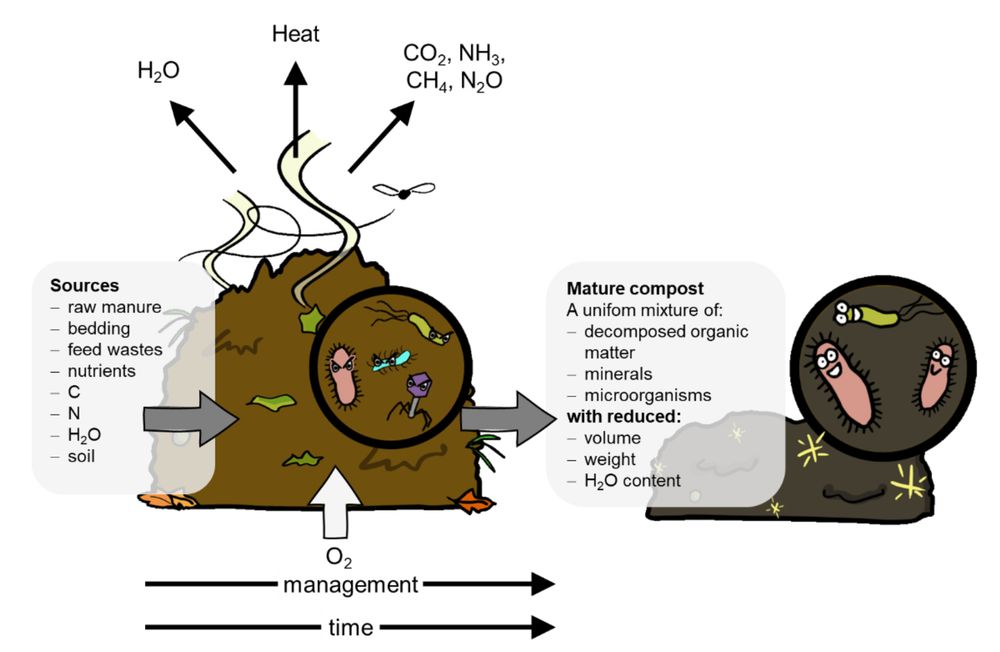
An infographic showing the sources for compost: manure, bedding, feed wastes. In the middle is a pile of compost showing microorganisms inside, and arrows showing the flow of oxygen into the pile, and outflow of water, carbon dioxide, ammonia, and methane. On the right is the contents of mature compost: decomposed organic matter, minerals and microorganisms. The benefits are reduced volume and weight and good water content.
#Composts are partially decomposed organic #soil amendments. They add #carbon and other nutrients to the soil. They can also influence soil texture in a positive way. Learn more in this new #GroundedInSoils blog post: wp.me/pclOv9-dz
30.11.2025 19:26 — 👍 4 🔁 1 💬 1 📌 0

A diagram showing water molecules bonded to each other and clay particles in soil. Underneath are the words cohesion: the attraction of water molecules to each other and adhesion: the attraction of water molecules to a solid
Cohesion and adhesion are forces that help soil retain and release water. Read about how soil is important in the water cycle in this #GroundedInSoils blog post: wp.me/pclOv9-xV
22.11.2025 19:54 — 👍 1 🔁 0 💬 0 📌 0

An area of land that was reclaimed after mining. The land is now covered with grassy vegetation and some shrubs.
Land reclamation is a requirement of companies seeking to alter the landscape for natural resource operations and/or land use changes. This photo shows a restored mining operation. Learn more about soil reclamation in this #GroundedInSoils blog: wp.me/pclOv9-cP
09.11.2025 19:35 — 👍 4 🔁 0 💬 0 📌 0

A hand wearing a yellow gardening glove on top of soil. Nearby is a packet of seeds.
Soil can capture & retain water for a substantial amount of time, depending on the type of soil particles present. By storing water, soil supports plant & soil microbe health and growth. Learn more about how soil holds water in this #GroundedInSoils blog: wp.me/pclOv9-xV
08.11.2025 00:33 — 👍 3 🔁 2 💬 1 📌 0

Graphic of two farm fields. One has controlled traffic, with wheel marks in parallel lines. The other shows random traffic where lines vary.
Controlled traffic farming is an approach to address soil compaction. Controlled traffic farming limits where all field equipment is driven. This method reduces soil compaction and improves soil health. Read our #GroundedInSoils blog: wp.me/pclOv9-cn
29.10.2025 22:53 — 👍 2 🔁 0 💬 0 📌 0

A diagram that compares soil that has a carrot growing in it, which loosens the soil in a process called biodrilling. Crops that follow biodrilling plants have better root growth.
The goal of soil health management is to minimize threats to #soil health that result in soil degradation. This #GroundedInSoils blog covers reducing soil compaction - including using root vegetables! More: wp.me/pclOv9-cc
19.10.2025 18:06 — 👍 1 🔁 0 💬 0 📌 0

Pie chart showing soil is a three-phase system; solid, liquid and gas. The proportion of each phase may vary, but ideally, it consists of 50% solid, 25% liquid, and 25% gas. © Asim Biswas, Univ. of Guelph is licensed under a CC BY (Attribution) license. ALT a pie chart showing the % phase of soil as outlined in the caption.
Soil is a complex three-phase system, comprised of solids, liquids, and gases. This area of soil science study is called soil physics. Learn about this important area of study in this new #GroundedInSoils blog post: wp.me/pclOv9-xc
04.10.2025 17:33 — 👍 1 🔁 0 💬 0 📌 0

Soils of Ontario
All of Ontario was once covered by the Laurentide Ice sheet of the Wisconsinan glaciation. The glacier had ice thicknesses exceeding one kilometre. This glacial event is responsible for the deposit…
Learn about the soils of Ontario! The Wisconsinan #glaciation covered Ontario with ice thicknesses exceeding one kilometre. This glacial event deposited almost all the parent materials from which Ontario #soils have developed. #GroundedInSoils tells more: wp.me/pclOv9-c4
27.09.2025 20:33 — 👍 3 🔁 1 💬 0 📌 0

Keith Reid giving a demonstration in a soil pit located in southern Ontario, discussing the impacts of the differences in properties in different soil horizons and the potential impacts on crop growth. Description: A man in a white hat and green shirt stands in a soil pit. He is holding some soil and speaking to an audience. A water bottle and tools are behind him.
Keith Reid is a soil scientist working toward the sustainable management of soil resources. Learn about why he became a soil scientist and what he likes about soil in this new #GroundedInSoil blog post: wp.me/pclOv9-xL
21.09.2025 19:25 — 👍 3 🔁 0 💬 0 📌 1

Schematic path of identifying a soil threat, measuring various soil health indicators, and implementing the 6Cs of soil health management that restore soil health and simultaneously enhance various ecosystem services. Adapted from the Soil Health Institute by Laura Van Eerd. © Soil Health Institute is licensed under a CC BY (Attribution) license.
No single measurement quantifies #soil health. Soil scientists infer the health of a soil from a multitude of soil attributes, processes, and contexts. Tend to the soils with care to ensure that soils’ role in providing #ecosystem services will continue. wp.me/pclOv9-bT
21.09.2025 01:07 — 👍 1 🔁 0 💬 0 📌 0

White patches on top of reddish soil with dried grasses in the background
You may have heard that #soil can have salts in it. Does this mean table salt? Not really. There are many types of salts that build up in the soil – which can be a bad thing. Learn more about soil salinization in this #GroundedInSoils blog post: wp.me/pclOv9-x5
07.09.2025 19:22 — 👍 3 🔁 1 💬 0 📌 0

Individuals can improve the organic matter of the soil in their own yard (or workplace!) by adapting the best practices of farmers. Learn more in this #GroundedInSoils blog post: https://wp.me/pclOv9-wZ
Individuals can improve the organic matter of the soil in their own yard (or workplace!) by adapting the best practices of farmers. Learn more in this #GroundedInSoils blog post: wp.me/pclOv9-wZ
24.08.2025 19:21 — 👍 0 🔁 0 💬 0 📌 0

Examples of major soils of the Chernozemic and Luvisolic great groups found in the Prairie Provinces. Soils of the Chernozemic order have organically enriched A horizons (Ah) overlying decalcified and slightly reddened Bm horizons. The upper C horizon has concentrated secondary calcium carbonate (Cca) overlying largely unaltered parent material (Ck) with lower calcium carbonate contents. The Dark Gray Chernozem is transitional to the Gray Luvisolic soils and has an A horizon with both organic accumulation and bleaching (Ahe horizon). The forested Gray Luvisols have a leaf litter layer (LFH) on top of the mineral soil horizons. The uppermost bleached Ae horizon overlies a B horizon with higher clay levels than the Ae (Bt horizon). © “Brown, Dark Brown, Dark Gray Chernozem: Saskatchewan Center of Soil Research; Black Chernozem: Roly St. Arnaud (Saskatchewan Center of Soil Research); Dark Gray Luvisol: Kent Watson (Saskatchewan Center of Soil Research)” is licensed under a CC BY (Attribution) license.
Though we typically refer to Alberta, Saskatchewan, & Manitoba as the Prairie Provinces, the true #prairies generally occupy only their southern portions. Shown: Chernozemic & Luvisolic great groups found in the Prairie Provinces. Read about their interesting #soils here: wp.me/pclOv9-bJ
17.08.2025 15:10 — 👍 7 🔁 2 💬 0 📌 0

Minerals in the soil
Most soils are composed of inorganic mineral materials that comprise the overwhelming bulk of soil. Well-structured soils are composed of about 50% solids; most if the solid portion is mineral mate…
Most soils are composed of inorganic mineral materials comprising the overwhelming bulk of a soil. Well-structured soils are composed of about 50% solids; most of the solids are mineral materials. Learn more about soil mineralogy in this #GroundedInSoils blog: wp.me/pclOv9-bA
10.08.2025 14:27 — 👍 1 🔁 0 💬 0 📌 0

Snow-covered former corn field. The lower part of the stalks - stubble - about 8 inches tall, is in rows sticking up from the snow.
Scientists are working with farmers and others to find ways to increase the soil organic matter on their farms. Leaving plant litter, reducing tillage, and using cover crops are a few methods being used. Learn more in this #GroundedInSoils blog post: wp.me/pclOv9-wZ
02.08.2025 21:25 — 👍 1 🔁 0 💬 0 📌 0
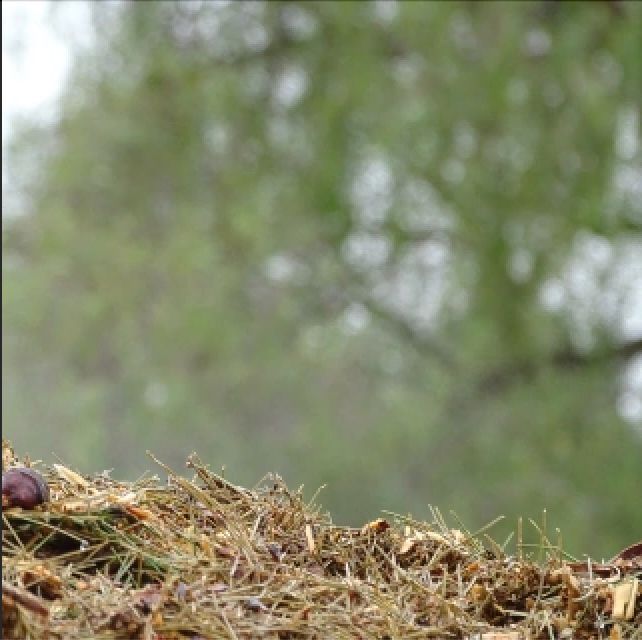
On the bottom edge of the photo, leaf litter on top of a compost pile. Mid-range, steam rising from the compost pile. Background, blurry trees
Soil organic matter is a complex mixture of plant, animal, or microbial-derived residues at various stages of decomposition. Plants and microbial communities are usually the biggest contributors to #soil organic matter. Learn more in this blog post: wp.me/pclOv9-wQ
27.07.2025 14:25 — 👍 7 🔁 1 💬 1 📌 0
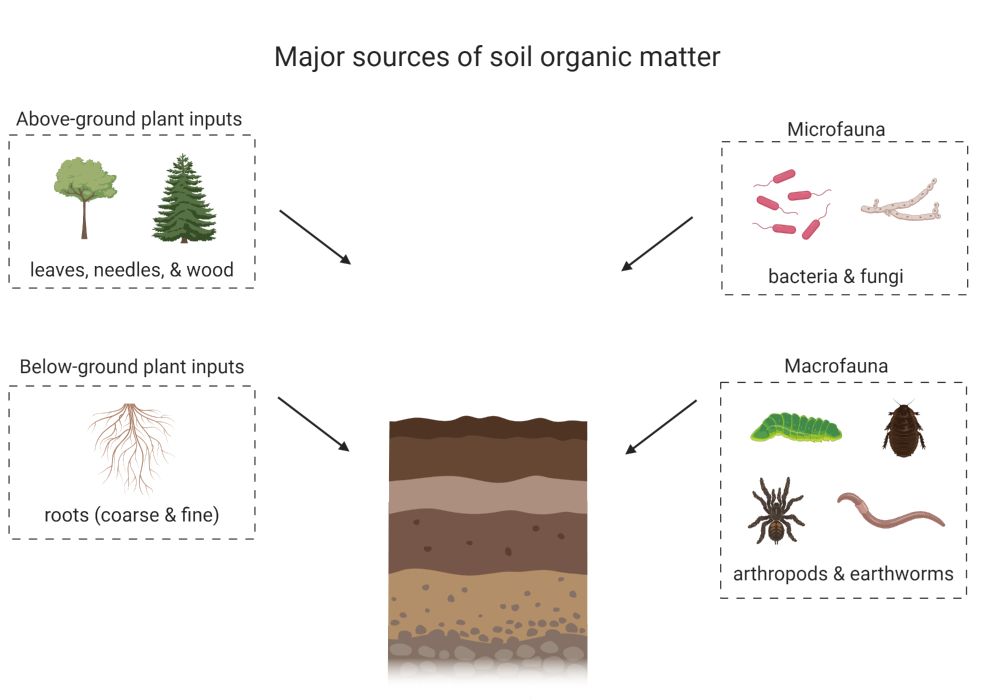
Major sources of inputs that form soil organic matter. The types and quantities of inputs vary with different ecosystems and land management practices. © Myrna Simpson. Figure created with BioRender (www.biorender.com). ALT infographic showing the major sources of soil organic matter: leaves, needles and wood; bacteria & fungi; arthropods & earthworms; roots (coarse and fine)
What is soil organic matter? #Soil organic matter consists of both living and non-living organisms and their components. Learn more in this #GroundedInSoils blog post: wp.me/pclOv9-wQ
06.07.2025 15:46 — 👍 6 🔁 1 💬 1 📌 0
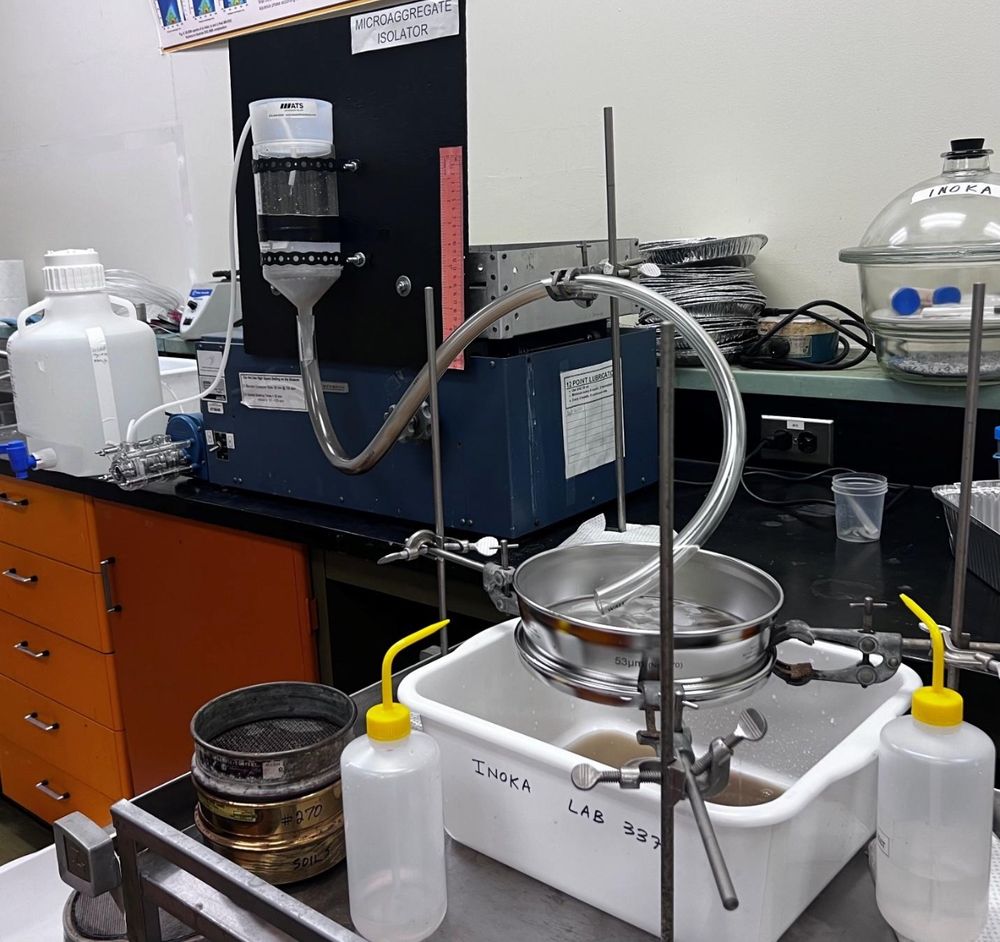
Lab equipment set up for testing. Several water bottles, a stainless bowl with a tube dripping into it and a basin below to collect overflow.
Charitha Hansima studied the environmental fate of veterinary antibiotics for her Masters degree. This work led her to the soil science community, and she started to see “the environment” through the lens of soil. Learn more: wp.me/pclOv9-xo
26.06.2025 17:58 — 👍 2 🔁 0 💬 1 📌 0

A large hill with a gully - hole - in the middle of it, where soil has eroded. On each side is green grassy material
How have humans influenced #soil development? Activities like agriculture and logging disrupted the natural processes of soil development that were in place before the settlers arrived in Canada. Learn more in this #GroundedInSoils blog post: wp.me/pclOv9-wI
19.06.2025 22:19 — 👍 6 🔁 1 💬 0 📌 0
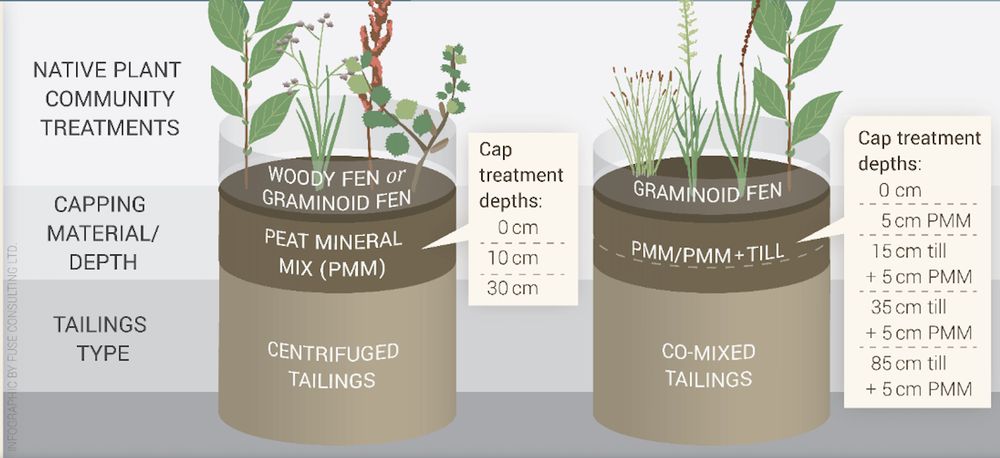
Image description: Graphic showing cylinders of soil with two types of tailings tested in a recent study. Each column shows: (1) the type of native plant community tested (woody fen or graminoid fen on right, graminoid fen on left), (2) the capping material (peat mineral mix or a mixture of peat mineral mix and till), and (3) depth used for the tailings tested in the study (ranging from 0cm to 85cm). Infographic by Fuse Consulting LTD.
A research team at the Natural Resources CA, CAForest Service, Northern Forestry Centre, Edmonton, AB, recently published results of a study using native #wetland species to reclaim treated fluid fine tailings. Read more in this #GroundedInSoils blog post: wp.me/pclOv9-eQ
02.06.2025 14:46 — 👍 1 🔁 1 💬 0 📌 0
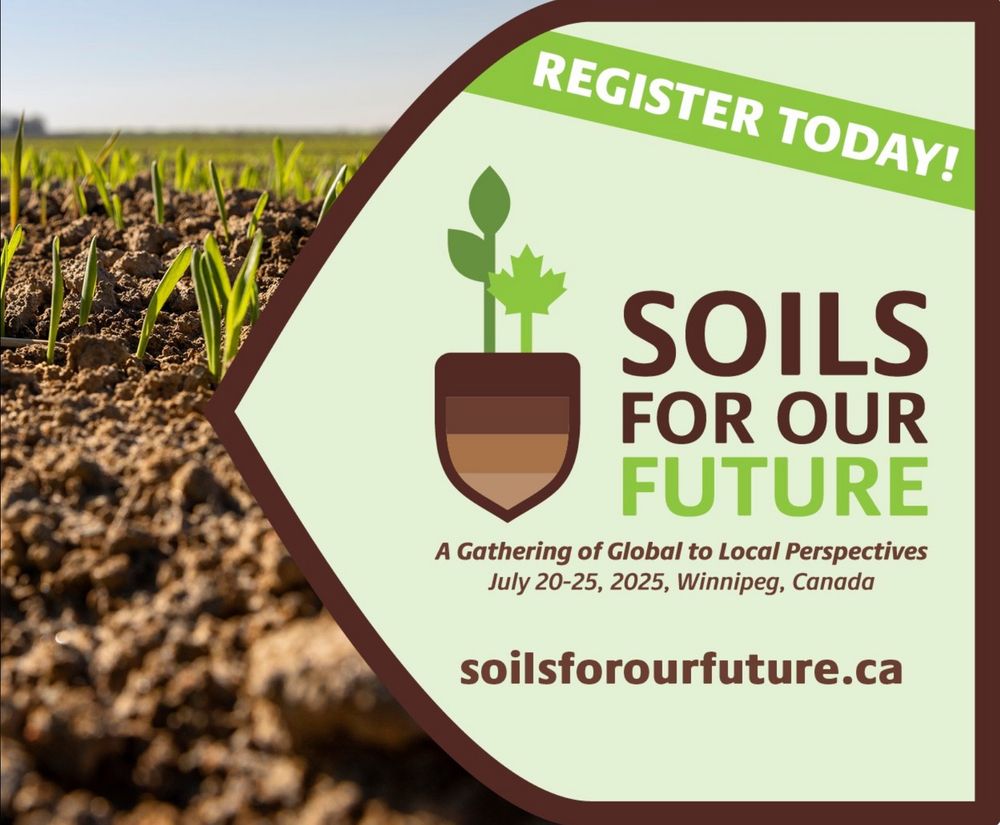
Early bird registration prices end this Saturday, May 31st! Make sure to register to get your discount! "Soils for our Future - A Gathering of Global to Local Perspectives" will be held in Winnipeg, Canada, from July 20-25, 2025.
Sign up for amazing tours and workshops!
soilsforourfuture.ca
29.05.2025 23:45 — 👍 0 🔁 0 💬 0 📌 0
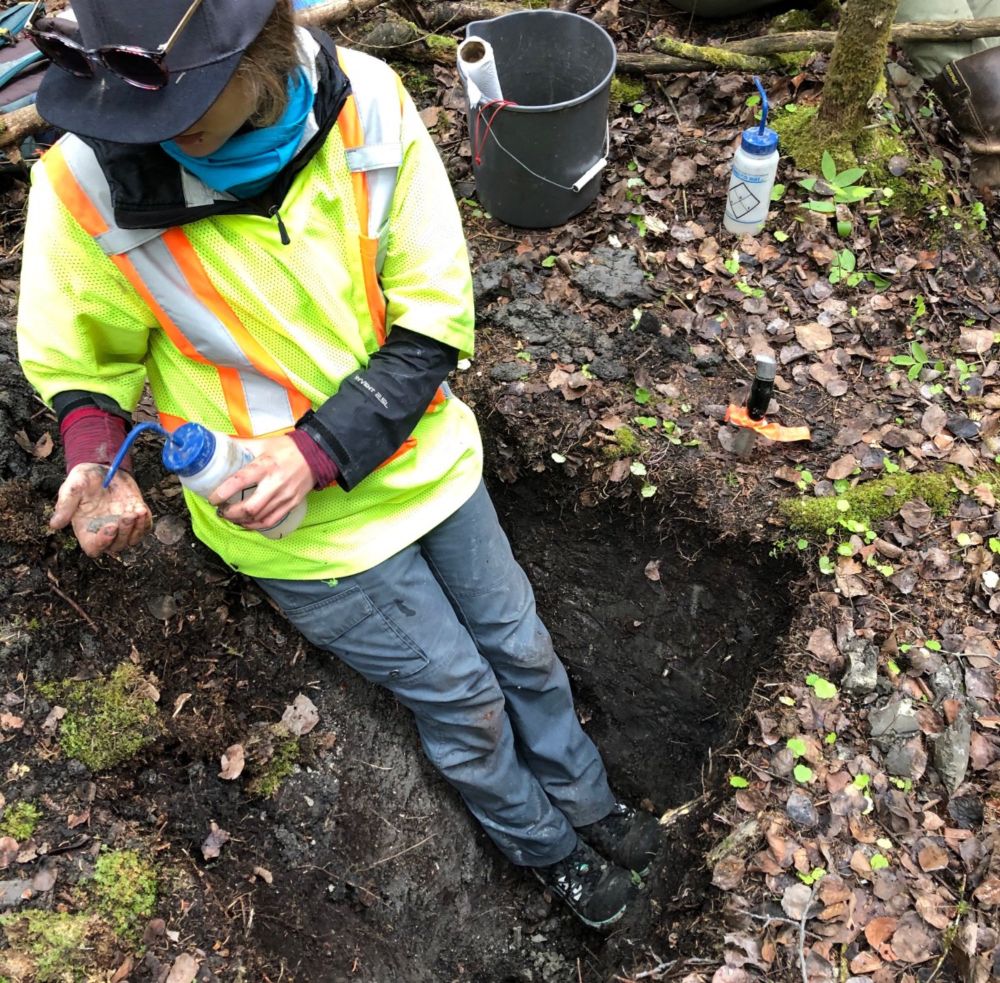
What are soil surveys?
Canada is endowed with vast amounts of agricultural land. Soil scientists determined this by doing soil surveys, starting in 1914. Today we know that worldwide, Canada has the third largest area of…
Soil surveys help understand the history and classification of soils in a specific area. #Soil scientists then create soil maps with this information to help in land use planning. Learn more in today’s blog: wp.me/pclOv9-aJ
27.05.2025 19:06 — 👍 6 🔁 1 💬 0 📌 0
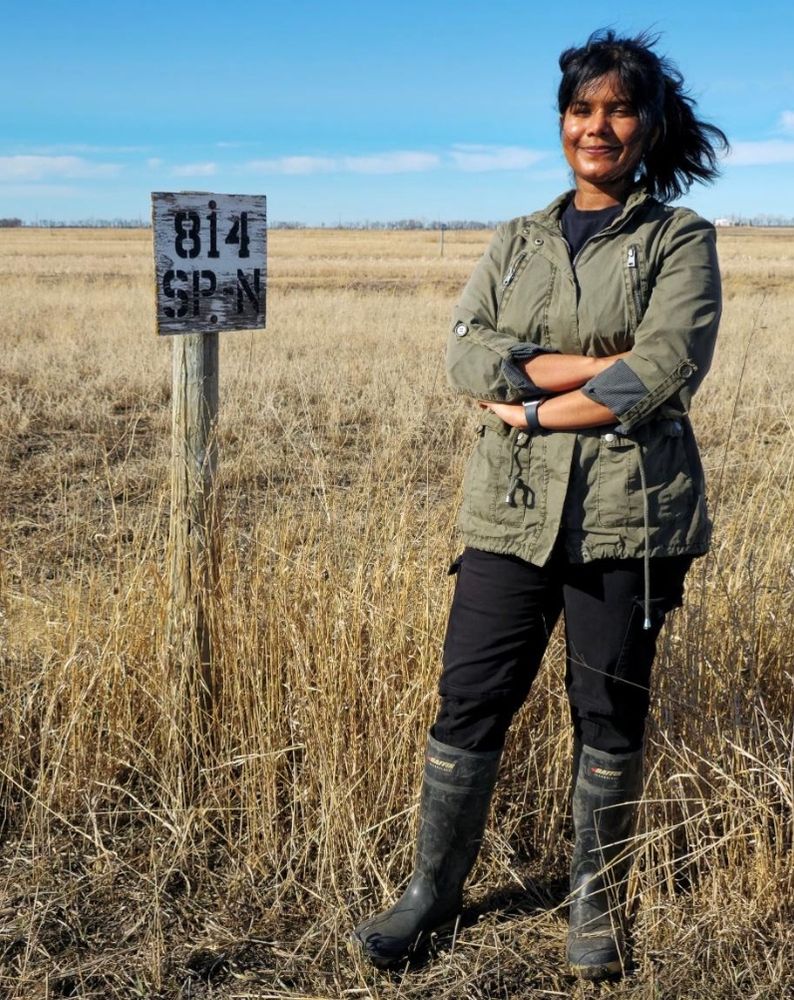
Person with shoulder length dark hair wearing a jacket, pants and boots, stands in a field. A blue sky is next to them.
Charitha Hansima is earning her PhD in soil science at the University of Manitoba. Her research is especially relevant for Prairie agroecosystems, where sustainable management of soils is key. Learn more in this #GroundedInSoils blog post: wp.me/pclOv9-xo
18.05.2025 12:59 — 👍 2 🔁 1 💬 0 📌 0

What distinguishes forest soils?
You may recall from this blog post that soil scientists study soil horizons by digging holes called soil pits. They then classify the soil in a particular area by “soil orders.” Forested soils in C…
In this #GroundedInSoils blog, we begin exploring biomes of Canada with #forest soils. Depending on the parent material, climate and more, #soils can be rich in organic matter and nutrients, or acidic with fewer #nutrients. Read more: wp.me/pclOv9-ax
17.05.2025 02:20 — 👍 6 🔁 1 💬 0 📌 0
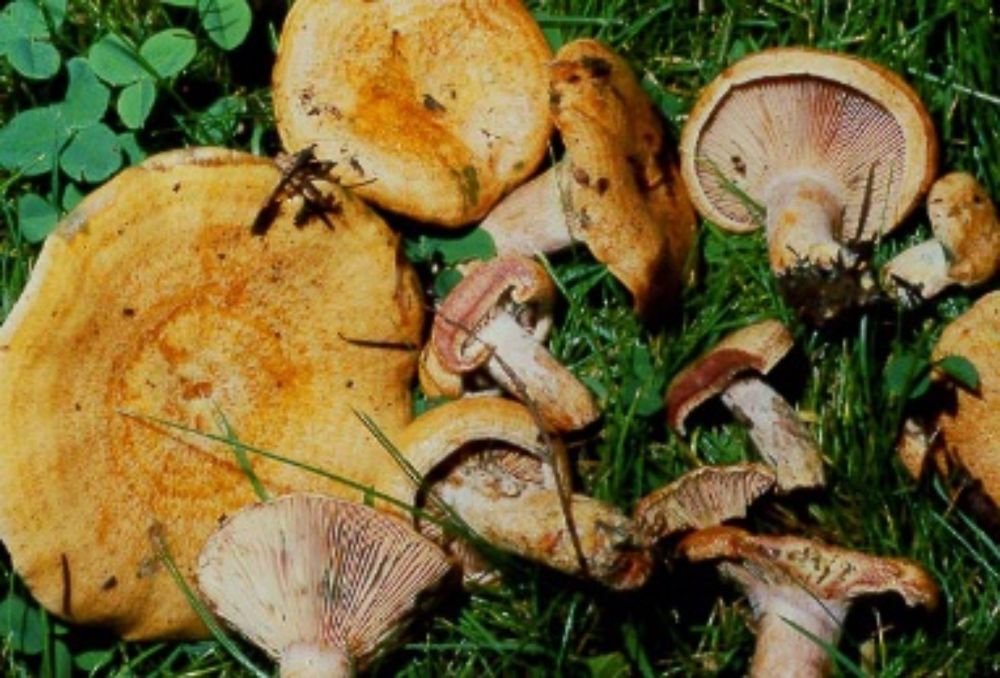
Do fungi live in soil?
Fungi are an important part of the soil biome. They are an important part of the nutrient cycle and soil health. Some fungi are single-celled yeasts. Others form multicellular networks that can inc…
We're fans of #fungi! Mycorrhizal mycelial networks in #soils can be pervasive and connect roots from multiple plants. They can facilitate energy and nutrient flow between them. A soil internet of sorts! Read more: wp.me/pclOv9-a8
14.05.2025 01:24 — 👍 2 🔁 0 💬 0 📌 0

Soils are now recognized as the most biodiverse habitat on Earth. Some biota in the soil can be seen, like ants and earthworms. Others can only be seen using a microscope. Learn more in this GroundedInSoils blog: bit.ly/3gzuiuH
04.05.2025 12:20 — 👍 1 🔁 0 💬 0 📌 0
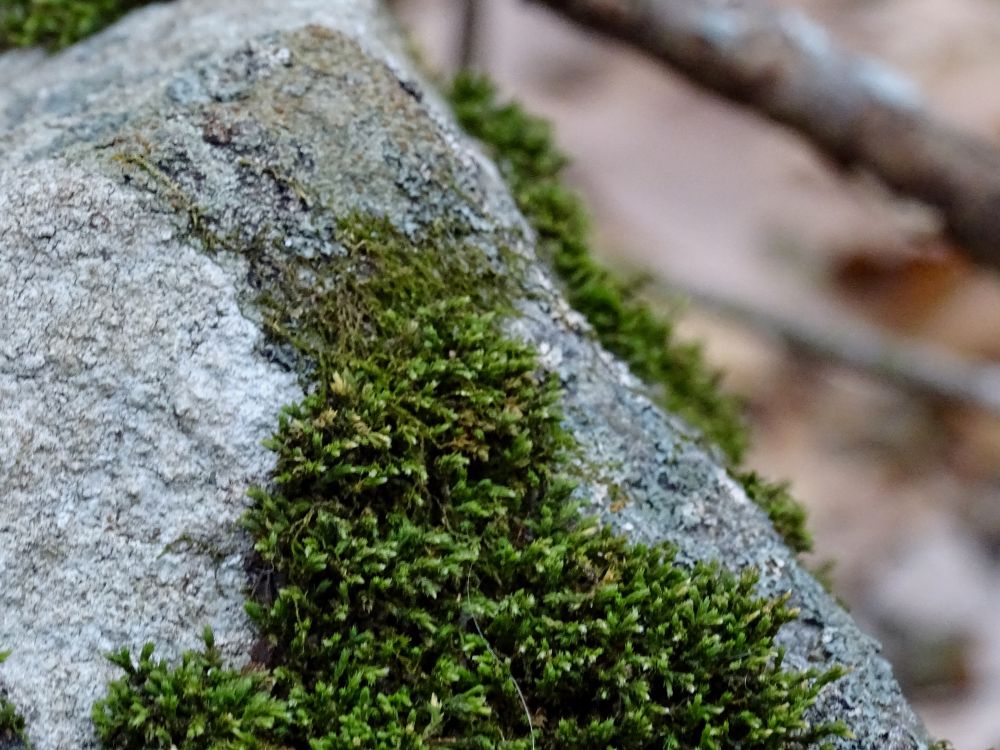
Large rock with thick moss growing on it
Transformations of mineral and organic materials within the soil are very important for both soil creation and for plant nutrition. This is an important step in soil health. Learn more about soil formation in this blog post: wp.me/pclOv9-wdR
30.04.2025 18:14 — 👍 1 🔁 0 💬 0 📌 0
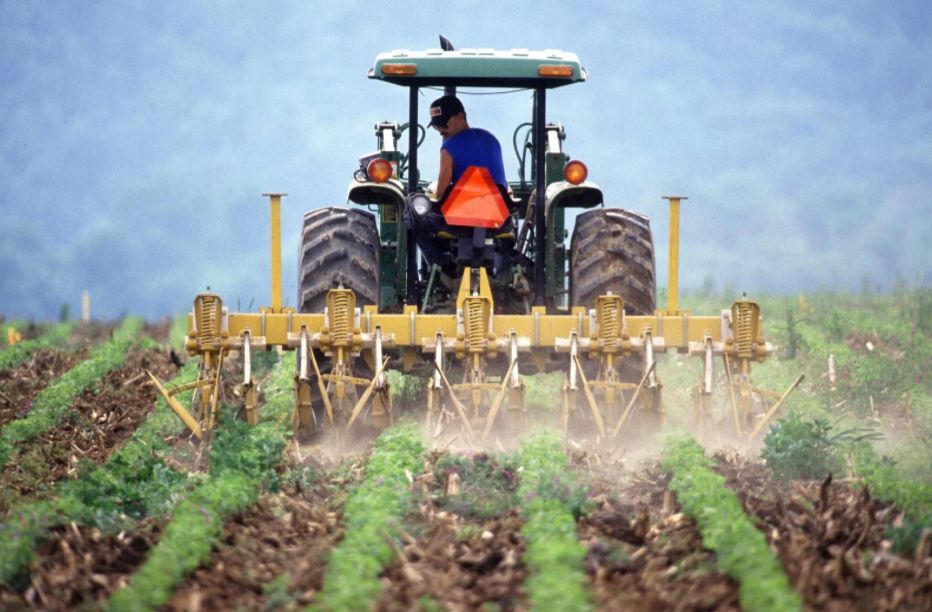
Man driving a tractor in a field
Happy Earth Day! The 4R nutrient stewardship approach is a decision-making framework that guides farms in selecting the four ‘right’ actions related to fertilizer use. 4R optimizes nutrient acquisition by the crop. Read more: wp.me/pclOv9-9V
22.04.2025 14:41 — 👍 0 🔁 0 💬 0 📌 0
All-Ireland body for professionals and students working in the discipline of soil science.
Website: https://www.ucd.ie/sssi/
Follow us on LinkedIn www.linkedin.com/company/soil-science-society-of-ireland
☘️ Soil and Environmental Microbiology Research Group, Ireland. We love microbes!
Relaying microbiology news, articles and comments relevant to aspects on bacteria, fungi, viruses and other microbes / microorganisms. Microbes are 💪
https://globalsoilbiodiversity2026.org/
Collaborating across Canada’s agri-food sector to advance farmer-led, net-zero solutions for a resilient and sustainable food system. CANZA brings together partners across the agri-food sector to build a more resilient, sustainable food system
Soil System Sciences Division (SSS) of the European Geosciences Union (EGU)
Focusing on #biochar and lake #sediments #fertilizers #nutrient #recycling. Towards #carbon-negative #agriculture!🍀🌞🌱
http://biochar-hy.blogspot.com/
You can find out more about us and our research here: https://research.curtin.edu.au/scieng/research/soil-and-landscape-science-lab/
Your source for news and updates about Critical Zone science in action all around the world.
Curated by the NSF-funded AccelNet Design: Accelerating Critical Zone Science with an International Network of Networks team.
Enabling the adoption of regenerative agriculture with farmers and ranchers across Canada 🌱
⬇️ Subscribe to follow the movement
https://bit.ly/linkinbioRC
The Faculty of Forestry at UBC equips the next generation of leaders with the tools to discover solutions to some of the most pressing challenges affecting communities around the globe.🌎🌱
https://forestry.ubc.ca/
Official account of the journal Soil Organisms published by Senckenberg @sgn.one. Posts include news and articles contained in issues of the journal and communications from the editors. Latest Issue: https://soil-organisms.org/index.php/SO
Peak body representing soil professionals in Australia ~ connecting people interested in Australian soil and its importance.
American Society of Agronomy - http://agronomy.org
Crop Science Society of America - http://crops.org
Soil Science Society of America - http://soils.org
Developing a coherent platform for promoting the translation of expert knowledge on soil biodiversity into environmental policy
Soil Association is the charity that digs deeper to transform the way we eat, farm and care for our natural world
Community guidelines 👉http://soilassociation.co/3EmLtsK
official Bluesky account (check username👆)
Bugs, feature requests, feedback: support@bsky.app




























